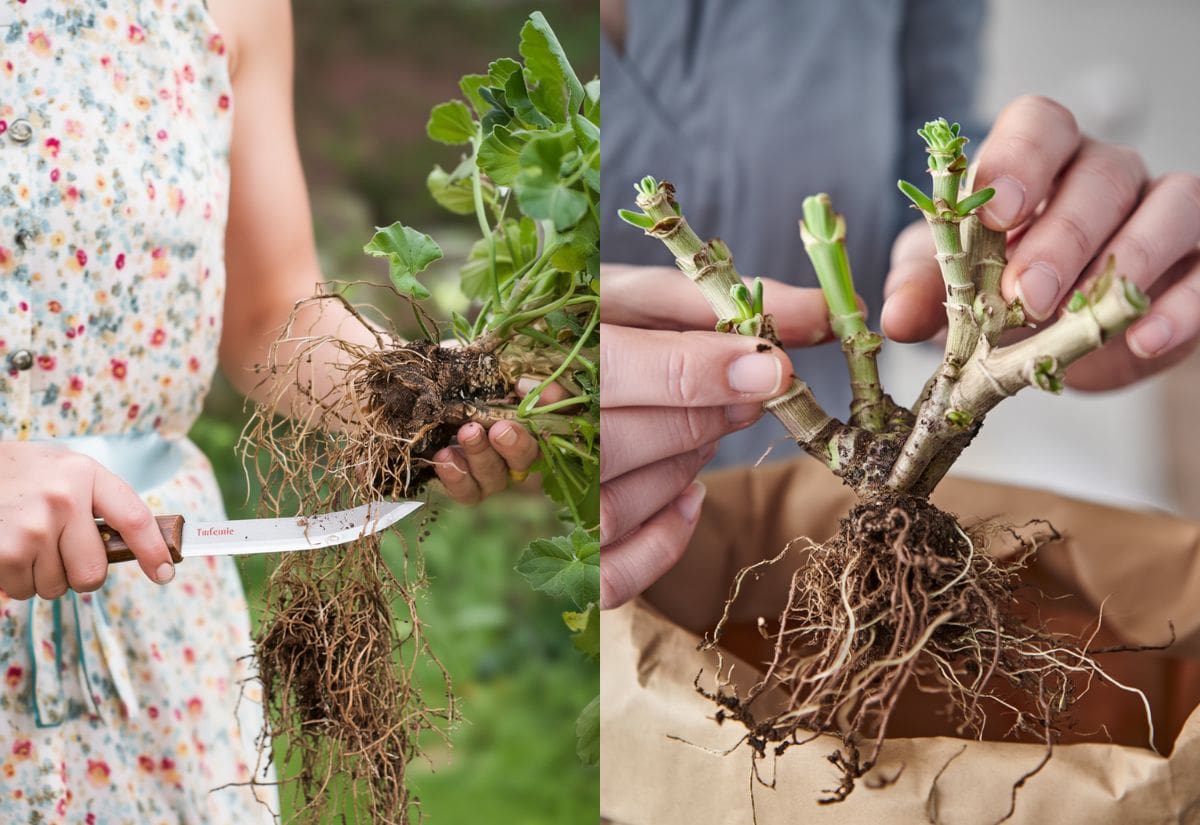
What if I told you that your so-called “annual” geraniums could survive the winter and bloom again next summer—without you having to fuss over them indoors? It sounds almost too simple to be true, but I promise it works. I’ve been overwintering my geraniums this way for years, and every spring I’m rewarded with healthy plants that are ready to grow and flower all over again.
The secret is an old-fashioned method called the brown bag trick. Instead of filling your windowsills with pots all winter long, you dig the plants up before frost, shake the soil from the roots, prune them back, and slip them into plain paper bags. Stored in a cool, dark place like a basement or garage, they rest in dormancy until spring. Thanks to their thick, succulent-like stems, geraniums don’t need soil or constant care to make it through the cold months—they just need the right conditions.
It’s a simple, inexpensive way to protect your favorite plants and save yourself the cost of buying new ones each year. I’ve overwintered geraniums this way for years, and I can tell you—it works. Here’s how you can do it too, and save your geraniums over winter so you can enjoy them year after year.
Why Overwintering Saves Money
I’ll be honest—when I first started gardening, I treated geraniums as disposable. Every spring, I’d head to the garden center and spend well over $500 on annuals, geraniums included. They bloomed beautifully through summer, and by fall they were gone. It felt like just part of gardening.
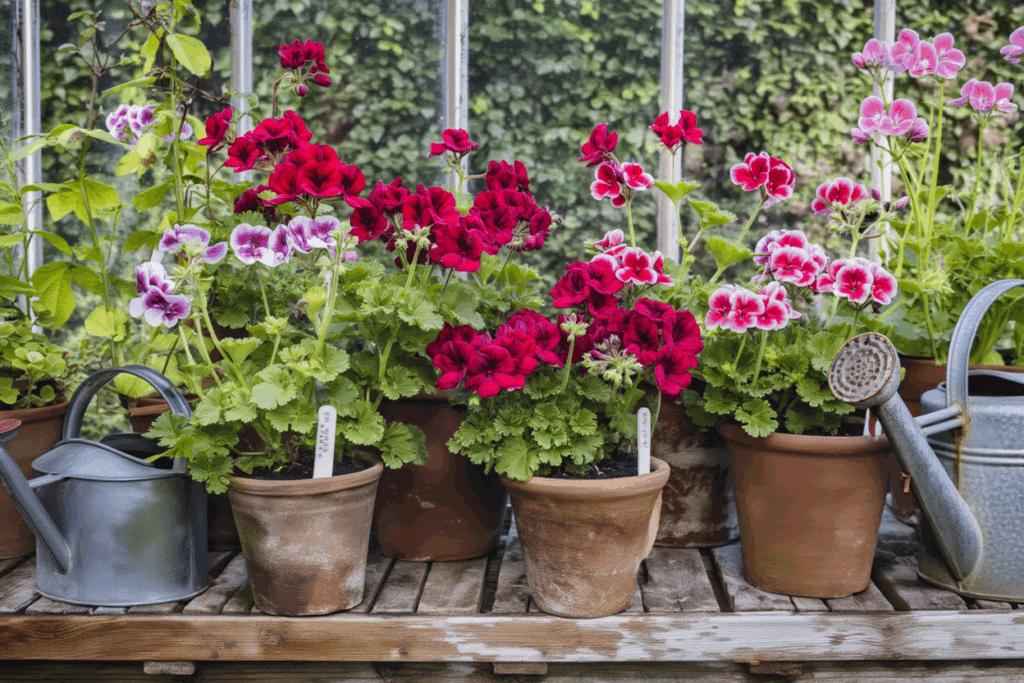
Learning how to overwinter geraniums changed everything for me. Not only did I cut that annual bill down to a fraction, but I also discovered that overwintered plants often come back stronger and bloom earlier than brand-new ones. Now, I get to enjoy my same healthy plants again and again, and on top of that, I can make plenty of new plants from cuttings each spring. It honestly feels like I’m getting free plants every year—and who doesn’t love that?
1. Dig up geraniums in fall
The best time to dig up geraniums is before the first hard frost, while the plants are still green and vigorous. Frost-damaged tissue is more prone to disease, and starting with healthy material increases survival rates dramatically.
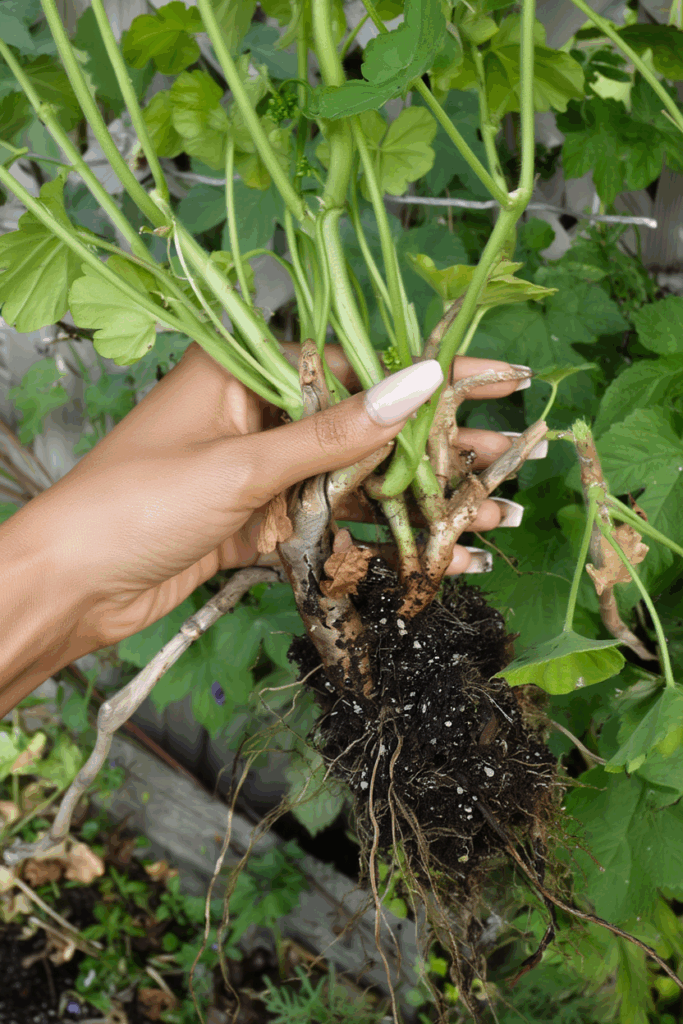
Use a garden fork or spade to gently lift the plant, keeping the main crown and root system intact. Shake away loose soil from the roots, but don’t scrub or wash them; some fine soil particles actually protect delicate root hairs from excessive drying.
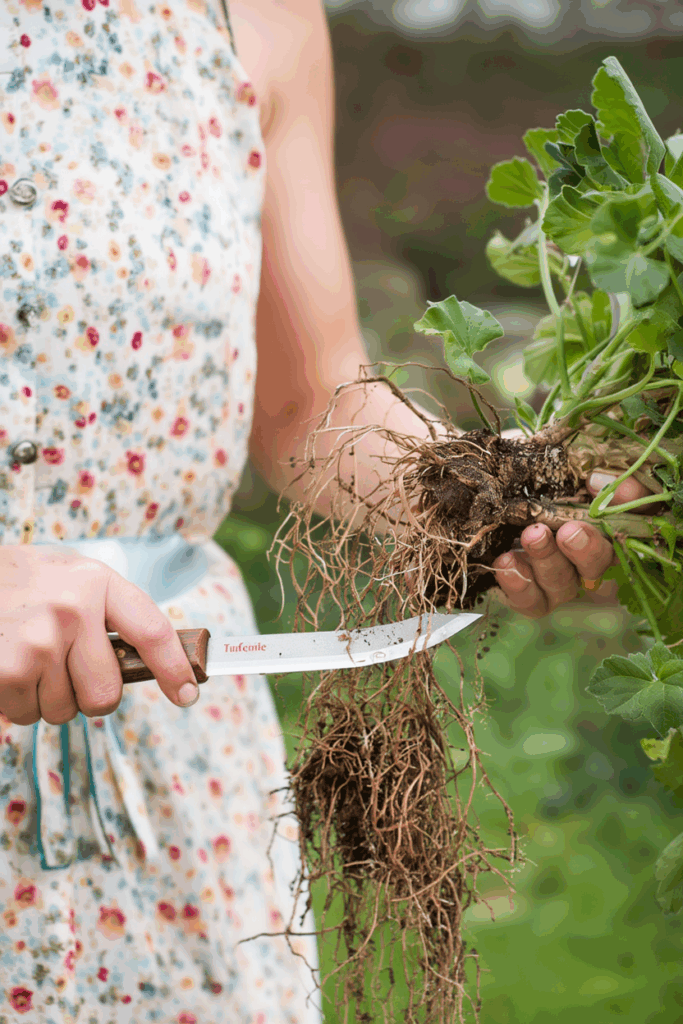
Then prune the plant back by about half its height. This not only reduces bulk for storage but also removes foliage that would otherwise rot. Remove all blooms, yellowing leaves, and any tissue that looks soft or diseased.
Before bagging, allow the plants to air-dry in a shaded, well-ventilated area for 24–48 hours. This curing period is critical. By allowing surface moisture to evaporate, you reduce the risk of mold developing once the plants are packed away.
2. Store your geraniums over winter
The actual storage method is wonderfully simple. Each plant is slipped into a plain brown paper bag, roots first. The bag provides darkness to discourage premature growth while allowing gentle airflow around the crown and roots. Unlike plastic, paper doesn’t trap moisture, which makes it far less likely to promote fungal issues.

Store the bagged plants in a cool, dark, and dry place where temperatures stay between 45°F and 60°F. Below 40°F, you risk freezing injury to the crown; above 65°F, the plants may begin breaking dormancy too early. A basement, root cellar, or unheated but frost-free garage is usually ideal. Traditionally, some gardeners hang plants upside down instead of bagging them, with the theory that gravity helps distribute moisture down the stems. While both methods work, the paper bag approach is tidier and easier for most home gardeners.
Another expert tip: always label your plants by color or variety. Geranium flowers look quite different—singles, doubles, salmon, red, white—and once dormant, you won’t be able to tell them apart.
3. Monitoring Dormant Geraniums Through Winter
The brown bag trick doesn’t mean you can forget the plants until spring. Periodic checks are essential for success. Once every four to six weeks, open the bags and inspect each plant. Healthy dormant stems should feel firm, not brittle. A little wrinkling is normal, but shriveled, hollow, or mushy stems indicate failure.

If the roots appear excessively dry, soak them in lukewarm water for one to two hours, then let them dry completely before returning them to the bag. Some horticulturists recommend this hydration treatment monthly; others find once or twice during the winter is enough. The key is balance—too much water encourages mold, too little leads to desiccation.
Any tissue showing mold or black rot should be trimmed away immediately. Entire plants that are soft, collapsed, or overrun with fungus should be discarded. Don’t risk contaminating your healthy stock.
4. Waking Geraniums from Dormancy
Six to eight weeks before your area’s last frost date, it’s time to wake your geraniums. Timing matters here: if you pot them too early, the plants may become leggy indoors before you can move them outside. Too late, and you’ll miss out on spring blooms.
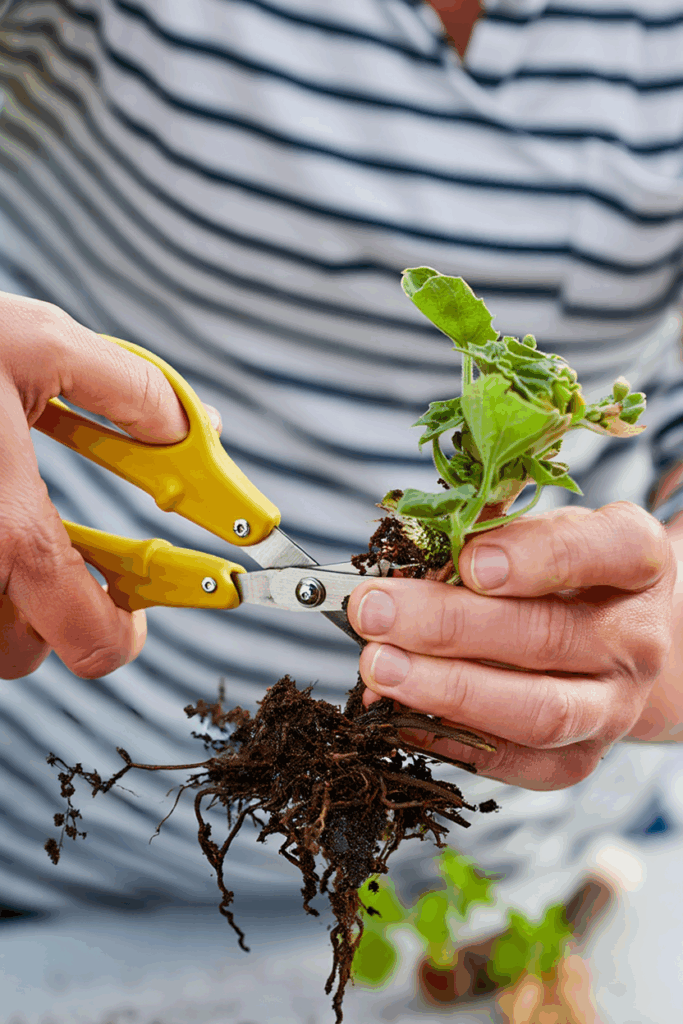
Start by trimming back dead stem tips and tidying long, straggly roots. A soak in water for several hours helps rehydrate the root system.
Use a clean pot filled with fresh, pre-moistened potting soil. Plant each geranium deep enough that two leaf nodes are under the soil surface—new roots will emerge from these nodes, giving the plant a stronger foundation.
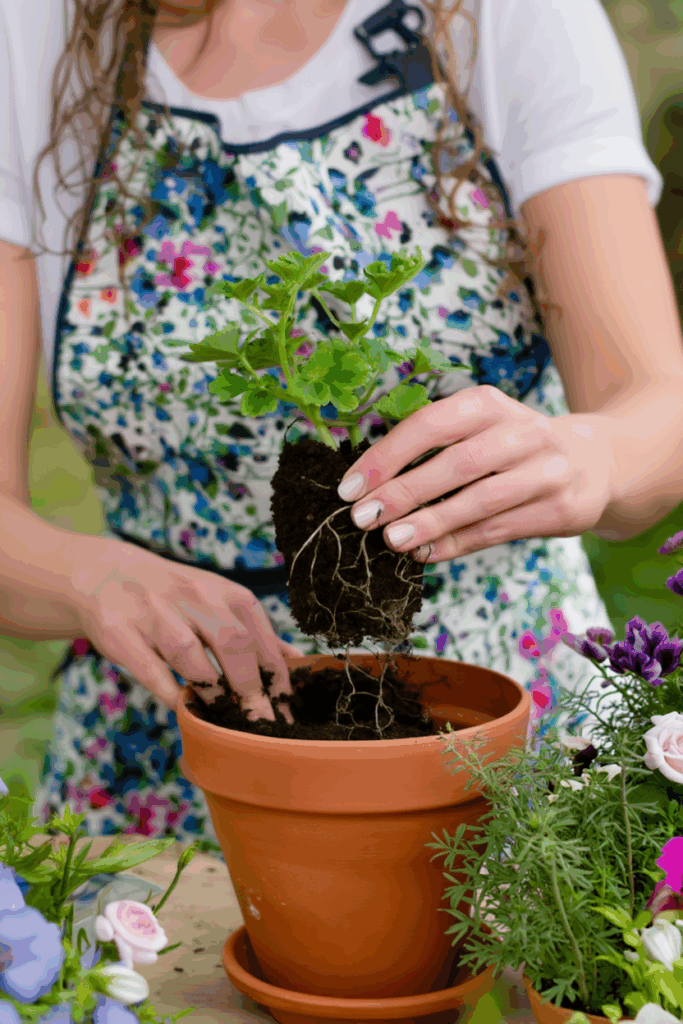
Water thoroughly to settle the soil, then place the pots in the brightest window you have, ideally south-facing. Supplemental grow lights can make a difference if natural light is limited.
Expect a lag period. Geraniums may sit quietly for two to four weeks before sending out new shoots. Patience is key here—resist the urge to overwater. Water only when the top inch of soil feels dry.
5. Transitioning Back Outdoors
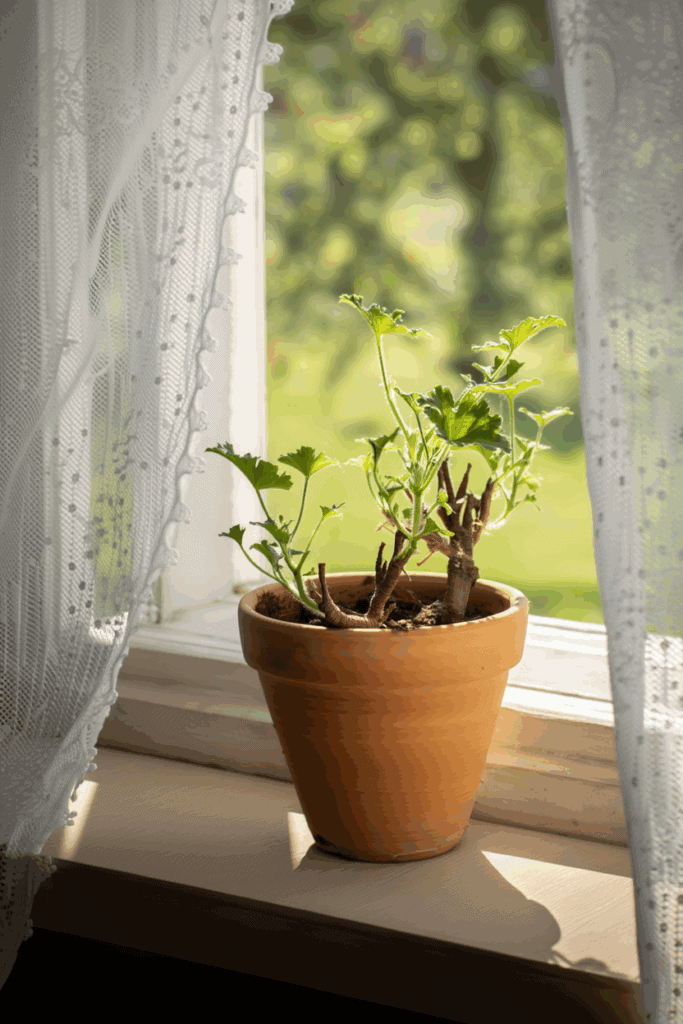
As soon as frost danger has passed, begin hardening off your revived geraniums. Place the pots outdoors in a sheltered, lightly shaded spot for a few hours each day, gradually increasing exposure over a week or two. Once acclimated, they can be transplanted back into garden beds or containers. Overwintered geraniums often bloom earlier and grow bushier than newly purchased starts, rewarding your winter care with a head start on the season.
Why This Method Works Best
Over the years, I’ve experimented with overwintering geraniums as potted houseplants, as cuttings rooted in water, and even as dormant stumps stored in peat moss. While each has its merits, the brown bag trick remains the most practical and reliable for the average home gardener. It requires no greenhouse, no grow lights, and no special medium—just common sense and occasional check-ins.
What makes it successful is its alignment with the plant’s natural physiology. By reducing moisture, limiting light, and keeping temperatures cool but not freezing, you mimic the dry season dormancy geraniums would experience in their native climate. The paper bag provides just enough airflow to prevent fungal outbreaks while shielding the plant from excess light that could trigger weak, etiolated growth.

Written By
Amber Noyes
Amber Noyes was born and raised in a suburban California town, San Mateo. She holds a master’s degree in horticulture from the University of California as well as a BS in Biology from the University of San Francisco. With experience working on an organic farm, water conservation research, farmers’ markets, and plant nursery, she understands what makes plants thrive and how we can better understand the connection between microclimate and plant health. When she’s not on the land, Amber loves informing people of new ideas/things related to gardening, especially organic gardening, houseplants, and growing plants in a small space.

I thought the idea of saving geraniums Is good to know I usually buy them every year
Hi Lily — yes, that’s exactly the beauty of it. Instead of buying fresh plants every spring, you can carry your geraniums through the winter and start the season with healthy, established ones. It saves money, and they often come back stronger and bloom even earlier.
Do you close the tops of the brown bags?
Hi, I’m going to try this method for the first time. I’m looking forward to the results.
I have one question. Do you close the brown paper bag during storage?
Thank you,
Betty Makela
Hi Betty! Yes, you do close the brown paper bag, but loosely. The idea is to keep the plants in a dry, dark environment while still allowing some airflow so they don’t mold. Just fold the top of the bag over once—no need to tape or seal it. Then place it somewhere cool and dry, like a basement or garage that stays above freezing.
Wonderfully helpful article. Thank you! One question: should I dust them with sulphur powder before bagging or is this overkill?
Glad it was helpful! You don’t need to dust your overwintering geraniums with sulfur—that’s usually overkill. The paper bag method works on its own if the plants are kept dry and cool. A light dusting won’t hurt if you’ve had mold issues before, but for most gardeners in normal storage conditions it isn’t necessary. The key is making sure they’re dry going in, and checking a couple times through winter to toss or trim any that get mushy.